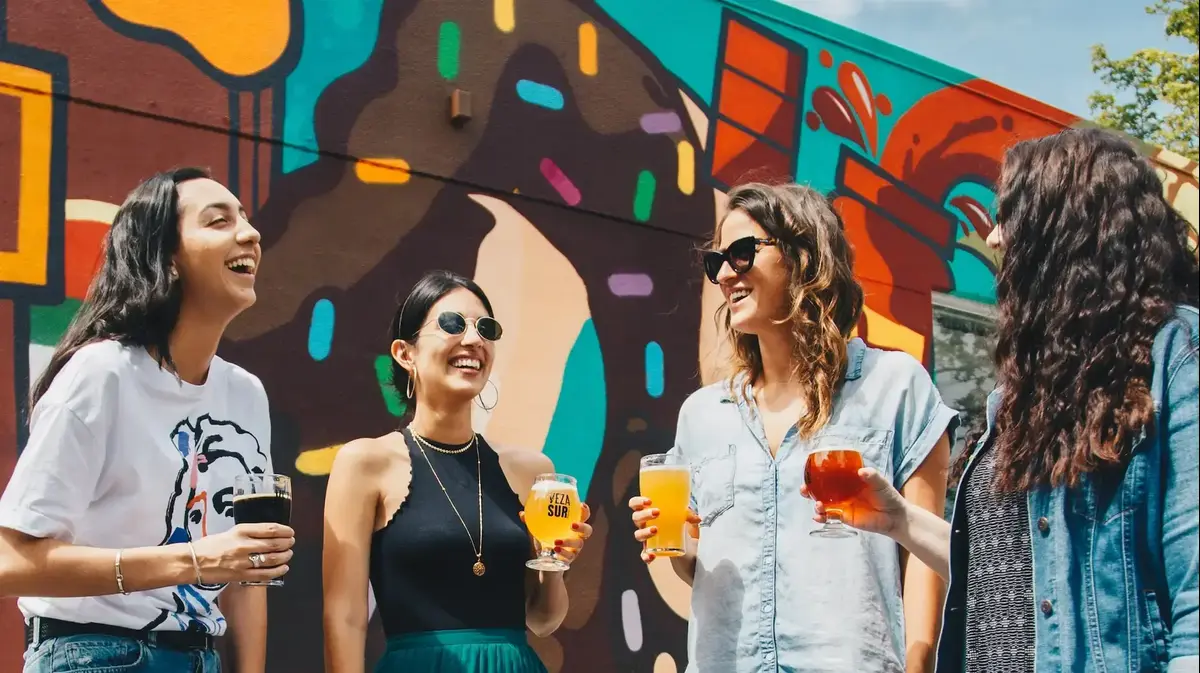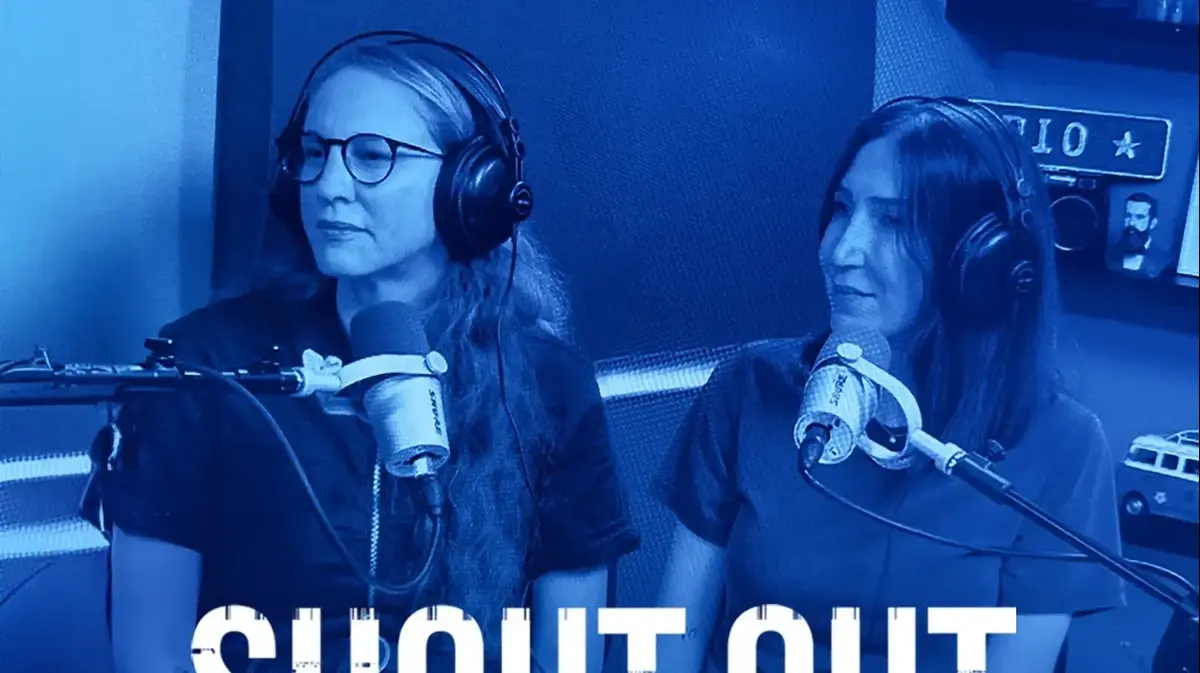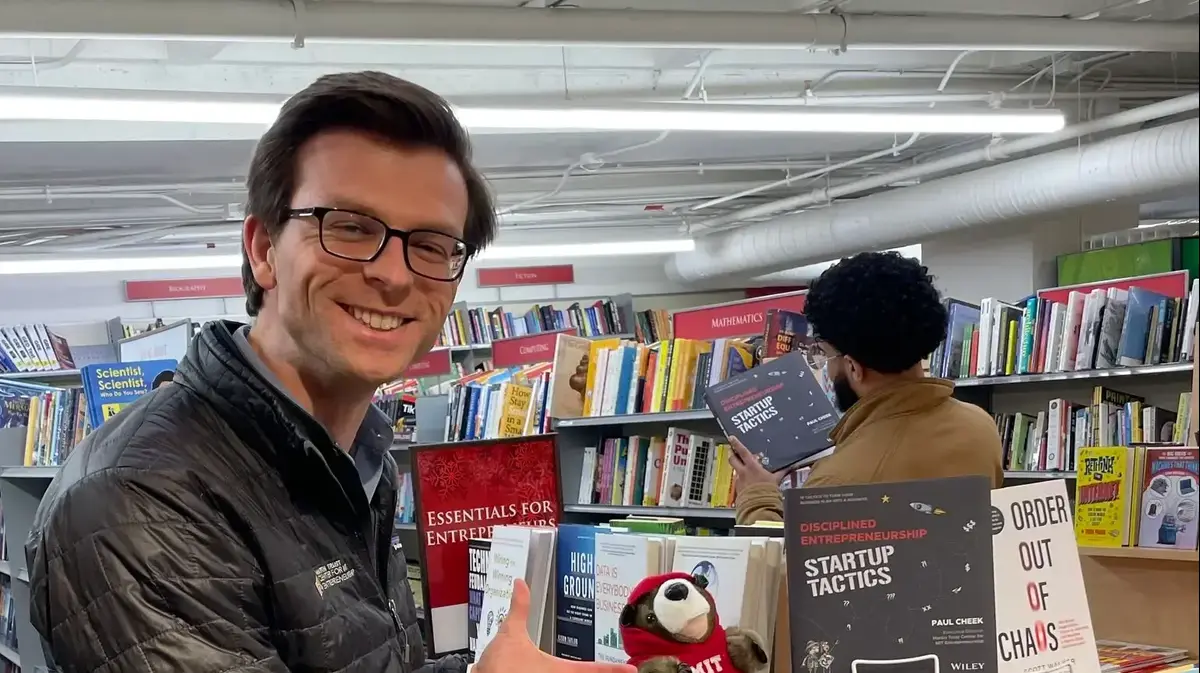In the long run, cultivating a strong community around your brand may be the best business decision for your business. (Photo: Unsplash)
Let's start at the beginning: what was the background for establishing the community?
Tamir Mandovsky, entrepreneur, investor, writer and owner of the company 'Zamman Asif'
, author of the bestseller 'Investments for Lazy People', and the creator of the podcast of the same name, who manages communities on social media regarding investments in the capital market, shares: "Immediately after the publication of the book 'Investments for Lazy People' , I noticed the need for people not only to consult with 'experts', but also to talk with beginners like them. This creates more emotional support than learning. People experience 'exiting the matrix' and authorities cannot provide them with the support and encouragement that fellow travelers provide. For this it is necessary community."
Rona Susel Head of Global Marketing Programs at Rapyd
, who manages the company's developer community, describes a similar process: "The idea to establish the community arose from conversations we had with developers in the field. We realized that there was a need for a real source of knowledge where developers could share insights in the fintech field, questions and concerns that arise in the context of payments and API interfaces," she says, "We came to the conclusion that the step The natural thing is to establish a community that will allow developers to learn from each other, collaborate, and grow from this mutual fertilization. The content shared in the community includes suggestions for collaboration in business ideas, learning tools, and instructions on how to use the API interfaces, relevant hackathon publications, and more."
Rona says that, "We conducted a global study among developers in the field and in November 2022 we published the results of the study that reflect and identify the challenges and opportunities for developers. The results of the study reinforce our assumption that developers seek and adopt creative methods for learning new skills. The findings emphasize even more the need for a dedicated community for developers in the fintech field ".
"The results of the survey prove that developers long to expand their knowledge in the fintech industry," Rona continues.
The survey presents a number of prominent opportunities in the field, among them: 39% of the survey participants answered that real-time payment capabilities are an opportunity when it comes to innovation, 30% of the survey participants answered that blockchain and cryptocurrencies are a new opportunity, 29% saw digital commerce as a prominent opportunity and 28% saw Alternative payment opportunities.
The community meets the need we identified, and it has become a center for developers where they can develop in the field, connect and share their work with other developers in the fintech world and has become a fertile ground for creativity and success." Meitav Shaam Lev, Marketing Team Leader
at Volta Solar
, who manages a community that deals with environmental quality: "The community was established to give its members all the tools, attention and content they need to take part in the global effort to reduce the use of fossil fuels, especially oil, coal and natural gas, which pollute the air and affect global warming. It is difficult to solve problems So great as individuals. For the change to be recognized with greater power, we need a strong and influential community that produces an effect of public and social support."
"Our community includes doctors, seniors in the economy, intellectuals, athletes, engineers, directors of preparatory schools, educators, economists, business owners and more," continues Meitav.
"The relationship with them is woven and tightened first and foremost at the local level, and looking ahead with more local and strong communities at the global level."
Almog Sussman-Lehmann, Head of Partnerships and Community at the Amiti venture capital fund
provides that "the starting point was that we in the fund have a lot of knowledge, tools and good connections that can benefit good people in Israel. Add to that a huge desire to see more and more successful startups and winning teams in Israel. We embarked on an in-depth research process that ultimately led us to understand what startups are interested in. What's burning, what What's missing is what doesn't work and what really works. We decided to take it a few steps further and build a community that would be a 'school for startups in the beginning stages' for entrepreneurs at the beginning."
Chen Hatab, director of the Hagtech community GrowingIL
: "Our community is a joint venture of the Israel Institute for Innovation, the Innovation Authority, the Ministry of Economy and the Ministry of Agriculture, and we sit under the umbrella of the Israel Institute for Innovation, an organization that promotes innovation communities on various topics in order to meet global needs. The community was created With the understanding that startups are not created in a vacuum and that a supporting platform must be created that aims to develop the ecosystem and promote the agtech industry in Israel."
How does the community help create opportunities for the brand?
Dotan Horowitz, Principal Developer Advocate at Logz.io and one of the leaders of the CNCF open source community in Israel,
emphasizes the importance of an unmediated meeting: "The developer community is a natural target audience for the company's products. This is an audience that shy away from traditional marketing and reacts negatively to it. The ability to reach this audience Through community activity, it is possible to generate organic brand awareness and position the company as active, contributing and influential in its field, which helps to stand out in the competitive market in an authentic and non-salesy way among developers."
"A community is based on trust, period," says Tamir.
"The reputation of a brand is an umbrella that extends over the members of the community, and this umbrella creates collaborations between people who have a solid common denominator. There are collaborations in which the community is the mediator - and then it also makes a profit, but this is not necessarily the reality. Sometimes the community is simply a safe place to act in it, and that's where her role ends."
Rona actually thinks it's much more than that: "Rapyd's developer community is not only a place where developers can consult and assist in handling technical questions. It's a place where global fintech developers find friends, community and support. So it's an authentic platform for consuming knowledge and making professional knowledge accessible. The community helps For developers to delve deeper into fintech and raise awareness about the opportunities inherent in fintech. Many members are creating essential tools for the world, through which profits can be generated - but they often do not realize the profit potential of their work through the implementation of fintech. The more developers take an active part in the community, the more support they will receive and accompaniment and will be able to initiate bold ideas and build applications of significant value."
Rona continues: establishing a professional and authentic community can be an excellent lever and an important part of a global marketing strategy in general and B2B marketing in particular.
Developers do not want to feel that products are being marketed to them by force and the community is a safe place where they can choose to consume content from the specific community.
They are looking for independent ways in which they can make real and personal connections and solve their problems and challenges.
Companies that can create the community framework have a much better chance of connecting the members to the brand and the people who stand behind it, to see through the routine marketing screen of a website, articles, ads, etc. which among us is less interesting to this particular audience."
Almog: "If in the beginning the topic of communities was nice to have, today it is already a necessary issue. We created a mechanism in the foundation to support existing communities and establish communities from scratch. We see people returning to our events, which is a good measure of their high value. We see that our community is growing and creating interest Without marketing, but thanks to the feedback that passes from word of mouth among the members and companies in the community. Looking at the brand, it is a joint effort from many directions. Thanks to the communities. The fund has become more well-known in Israel, the presence in the media has grown and improved, and the number of startups we meet is increasing."
Chen: "As a non-profit organization, we have no commercial interest in generating revenue, but on the other hand, this gives us a unique position that allows us to see the needs and challenges of everyone in a broad way, and from this we can create activities that will meet the needs and connect the members of the ecosystem in order to create collaborations action and opportunities for growth and innovation".
Chen continues: "In our case it's not just a community, but an "ecosystem" - over 6,000 community members from various fields of interest, including startups, investors, government bodies and academic institutions, working together to create an environment that fosters innovation, collaborations and growth. I think The beauty of it is that in Israel they realized that cooperation within an ecosystem is of great importance, and even competitors are willing to cooperate with the understanding that cooperation is beneficial to all of us in order for us to grow as one ecosystem."
What are the daily challenges in managing a community?
"The community requires many inputs," says Tamir.
"Without volunteers from the community, it is impossible to create a pleasant and assertive hierarchy. There are many people in the community who act out of self-interest, and you need to know where to exercise a strong hand, by blocking for example, and where to try to educate the audience. I know it sounds pretentious, but many times a real mediator "A person who reacts a little aggressively will greatly appreciate a gentle face that offers him his favor - to try and give value without demanding an immediate return.
This is really in his best interest and most people understand that the admins want a fruitful and useful discussion, which will benefit the commenters in return."
"Managing a community can identify a number of challenges, some of which need to be identified in advance and some of which can arise along the way. Everything requires building a strategy in advance," says Rona.
"The main challenges we dealt with could be around keeping the members of the community active and involved - here we need strategic work of research, creating content and matter, resolving conflicts and balancing different opinions on professional issues or even those that arise from the fact that the members come from other backgrounds, different technological specializations, from different countries and therefore we must Think of different ways of how to balance the existing gaps between them. A constant challenge is recruiting new members while keeping the existing ones and their involvement. There is quite a bit of work behind the scenes that needs to be done. The community is like a plant that requires pruning and nurturing, and only investment will make it grow. To retain and recruit developers For the community, it should be attractive in terms of the knowledge it provides. Furthermore, a lack of knowledge can lead to delaying the development of strong communities."
Chen Mehekhat: "One of the main challenges in managing an ecosystem is maintaining the involvement of community members. This requires consistent communication, relevant content and consideration of all the different members of the ecosystem. In addition, it is always important to think about the value conveyed, and in every activity, community managers should consider the interests of all members and strive to provide them with valuable opportunities, resources and connections."
Dotan: "The community is a place for sharing knowledge and experience. For this, an investment is required in locating and nurturing community members with relevant knowledge and experience who will take part and share, even if they are not professional speakers. On the other hand, it is necessary to examine the content and filter out marketing or sales content in order to maintain the quality and credibility. I also work on the issue of equality and diversity. The gender issue is a challenge especially in the field of engineering, because the percentage of women among the engineering community in Israel is still significantly lower than the percentage of men. Another challenge is finding sponsors for the activities and events we hold throughout the year."
"Another challenge is the growing pains (positive, one must say), of the expansion of the community - how to connect everyone, and how to connect the different cycles of our program as well," Almog says.
"Another facet of the field of community management is the measurement of success, which is quite a challenge in itself. I personally think that criteria for success should change, improve and grow over time and with the expansion of the community, according to the changing needs. The common denominator for all these challenges is constant reinvention. This requires A round-the-clock thought of innovation and initiative. There is never a dull moment. This is the function of initiative.
Meitav: "In a world where conditions change rapidly and often have to be manipulated, managing a community requires maintaining constant relevance, responding 24/7 and creating relevant content. Our community is spread all over the country and in three different sectors - domestic, commercial and municipal. This fact requires thinking outside the box For the box, combining physical and virtual meetings and creating a platform as accessible as possible to its members.
Each group is unique in itself and its needs are obviously different.
It is not something that can be done or managed as "on the road".
Community activity requires investment, forward planning, mental flexibility and optimal availability.
The community allows us to provide a wide network of information, to initiate discussion frameworks in an honest and genuine way, as well as to receive criticism.
We encourage an open, tolerant and high-quality dialogue, which helps us to constantly improve."
Community management dos and don'ts - what are your tips?
Rona: "You have to love helping others become a community. The size of the community doesn't matter, you still have to be a listening ear and take part. The community will grow and prosper the more you invest in it. In addition, you need to hire employees in the company who have the appropriate background, desire and fashion to support members of the community and give their knowledge And from their experience. The more ambassadors there are involved from within the organization, the stronger the connection of the members of the community will be to the brand, the product and the values around it," says Rona.
"Golden advice for anyone who wants to market themselves in the communities - do it without the desire to receive a return," says Tamir.
"I know it sounds strange, but if you respond with high-quality, detailed and edited responses, then the members of the community will be curious to know who you are, and will already find a way to reach you on their own. A person who reaches out to you is an infinitely better "next" than someone who saw a response that "pushes "To buy it, and that's the secret of content marketing on one foot."
Chen: "Meeting with everyone and actively listening to their needs and points of view. One of the biggest pluses for me in this position is the amazing ideas and innovations that I am exposed to on a daily basis. Remember that the members of the ecosystem are not customers or users, and be sure to cultivate a culture of cooperation, innovation and mutual support with them ".
Almog: "In order to generate proper connections and engagement, it needs to be based on knowledge. Who came to which event, what are the interests of community member X, what constructive comment did Y make in one of the metataps, etc. This can really be used by members of the community , and especially - the community manager for the purposes of improvement and accuracy."
Meitav: "To create diverse, collaborative and inviting content - do not follow one line. Listen and hear all the members of the group - as is the way of nature, there will always be the people who will stand out more and participate more. It is also important to hear the voices that are less likely to share and speak. From all the ideas and people, come out The most special things there are. Cultivating togetherness and strengthening the common mission - always answering the questions: What are we doing here? What did we set out on the joint journey for? Am I in the right direction? And other questions that will always arise. The role of the community is to strengthen and create the unique answers for each and every one , both to the members of the organization, also to the customers, also as a brand and one common community."
Dotan: "The community should be a safe, inclusive and sharing place for everyone. Create the conditions for this, and remove obstacles when necessary. Sharing knowledge and experience, as well as failures and challenges, is at the core of community action, and is what will allow the community to grow and grow. It is also important to maintain a transparent, fair and non-discriminatory process , which allows anyone who can and wants to contribute knowledge and experience to do so. For example, it is important that the process of selecting the lectures for the conference be by a diverse committee, based on clear principles, and while examining the quality of the content and the suitability of the lecturer, without additional extraneous considerations. On the other hand, it is important to ensure that there Gender diversity in speakers and among minority groups, to encourage their representation in the community."
What is the difference between an audience and a community?
"The main difference between an audience and a community is expressed in the level of involvement in the content and the way they consume it," says Rona.
"My diagnosis is that an audience consumes the information that is available to them in a one-way manner, compared to a community where there is a deeper involvement and connection between the members. We can have community members who were at physical events or consumed different content. The level of involvement of the community members is deeper and so is the level of familiarity between The friends and the connections that are formed between them. Prominent characteristics of the community are not only shared interests, but also the desire to communicate with each other, which means that there must be channels and tools for interaction within the community."
Dotan: "An audience comes to passively consume information from a central source of knowledge. This is a one-way and centralized knowledge channel. A community, on the other hand, is a cooperative and inclusive arena, a place where community members share their experience, share difficulties and challenges, consult, and find partners for various collaborations. Anyone can contribute, speak at the conference (there is a transparent process of submitting proposals that will be examined by a committee based on the content only), or take part in meta-taps and discussions in the various groups.
Sometimes it is through small meetings and sometimes through large, virtual or physical events.
The common denominator is always the same safe, inclusive, sharing and non-discriminating place."
Tamir: "When two strangers stand in line for a band's performance, they are not interested in each other.
But when two people read a book that changed their perception of life, they will want to talk to each other because they are going through a unique experience that spans several layers of life.
They want to know that they are not the only ones, and want to help others overcome these challenges like them.
an audience is a listener,
Marketing and digital
The knowledge bank
Tags
Human Resources
Working
Employers
human capital
talents
Jobs
The labor market
the employment market















